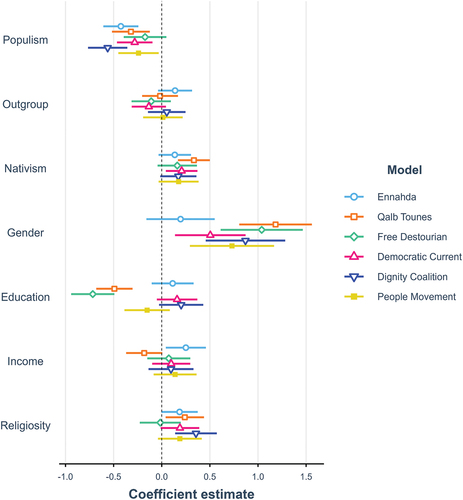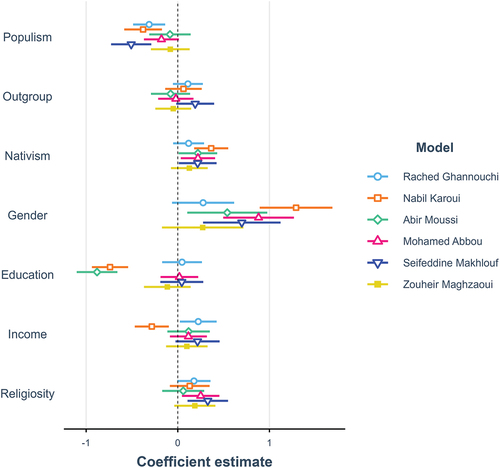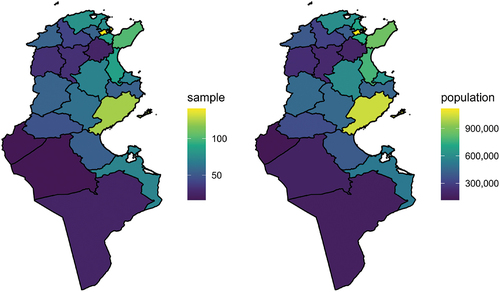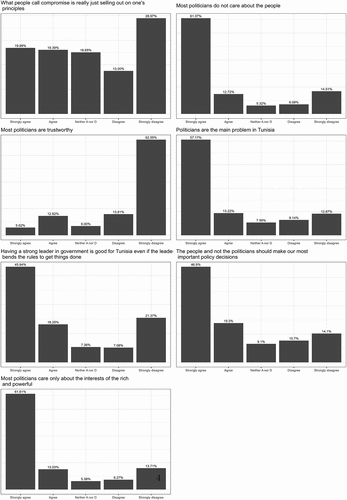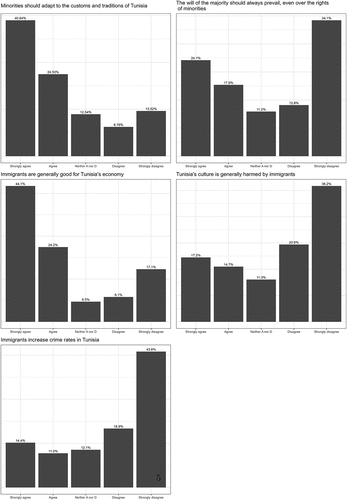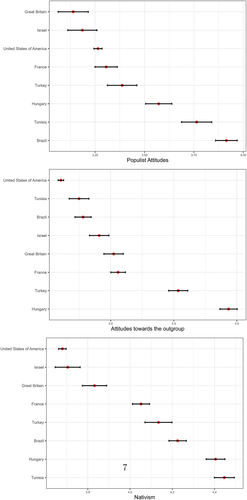Figures & data
Figure 3. Odds Ratios (95 per cent CI). Voters are compared to non-voters, and voters of Kais Saied are compared to all other presidential candidates.

Table B1. Comparison between population estimates and unweighted survey distribution on key variables: age, education, and gender.
Table B2. Descriptive statistics of some key variables from the CSES dataset.
Table C1. Exploratory factor analysis using the 16 items from the CSES module 5 scales (N = 1477). Items with loading 0.3 bolded and retained for the next analysis. Model fit indices: RMSEA = 0.04, CFI = 0.97, TLI = 0.93, SRMR = 0.019. Factor rotation used: Geomin.
Table D1. Regression models for political parties: Entries are regression coefficients with standard errors in parentheses.
Table D2. Regression models for leaders of leaders: Entries are regression coefficients with standard errors in parentheses.
Table E1. Regression models for voters among political parties’ supporters: Entries are regression coefficients with standard errors in parentheses.
Table E2. Regression models for voters among party leaders’ supporters: Entries are regression coefficients with standard errors in parentheses.
Table E3. Logit regression models: standard errors in parentheses. The reference category for model (1) are non-voters in the presidential elections. The reference category in model (2) are all other presidential candidates.

